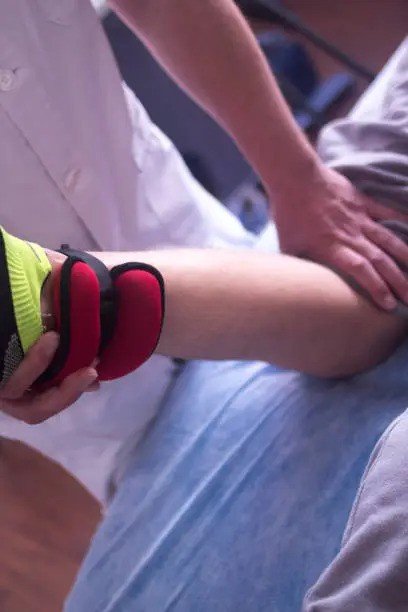Ankle surgery recovery can vary greatly among individuals, and knowing what warning signs to look for can significantly impact the healing process. This guide details critical symptoms that may indicate complications, empowering patients with the knowledge to address issues promptly.
1. Recognizing Infection
Symptoms of Infection
Infections are one of the most common complications following surgery. Early signs include unusual redness, warmth, or swelling around the incision site, often accompanied by fever, chills, or an unusual or foul-smelling discharge. These symptoms can escalate quickly and require immediate medical intervention to prevent further issues.
2. Pain Management
Understanding Normal vs. Abnormal Pain
Post-surgical pain should typically follow a predictable path of gradual decrease as days pass. Persistent pain that remains intense or escalates, especially pain that doesn’t respond to prescribed painkillers, is abnormal. This type of pain may indicate issues such as infections, joint misalignment, or even hardware complications in the ankle.
3. The Dangers of Blood Clots
Signs of Blood Clots
Blood clots pose a significant risk, particularly in the legs after ankle surgery. Symptoms include pain and tenderness in the calf, a noticeable warmth in a localized area, and visible redness or discoloration on the skin. These signs might suggest deep vein thrombosis (DVT), which requires urgent medical care to prevent the clot from moving to the lungs, causing a pulmonary embolism.
4. Healing Process Indicators
Signs of Poor Healing
Ankle stiffness, persistent swelling, and an inability to bear weight according to the recovery timeline provided by your surgeon can all indicate poor healing. Excessive scar tissue or delayed union of any bones involved in the surgery might also be contributing factors. Regular follow-up appointments are crucial to monitor healing progress.
5. Neurological Symptoms
Identifying Neurological Issues
Post-operative neurological symptoms should not be overlooked. Loss of sensation, persistent tingling, or weakness in the foot or ankle area can suggest nerve damage. These symptoms may result from surgical trauma or post-operative swelling that compresses nerves, which might require adjustments in treatment or further surgical intervention.
6. Mobility Milestones and Setbacks
Tracking Mobility Progress
Regaining mobility is a key aspect of recovery. Setbacks in mobility, such as a decrease in the range of motion or sudden pain during movement, need to be addressed. These could be due to improper joint alignment, inadequate physical therapy, or the development of complications like adhesions or tendonitis.
7. Lymphedema After Surgery
Recognizing Lymphedema Symptoms
Lymphedema involves persistent swelling caused by fluid retention due to surgical disruption of the lymphatic system. It may present as a heavy, tight feeling in the limb, with skin that may feel harder or thicker at the affected site. Managing lymphedema involves physical therapy, compression garments, and sometimes surgery.
8. Bruising and Its Implications
Assessing Bruising
Bruising is expected after surgery, but it should resolve gradually. If bruising spreads significantly or worsens, it could be a sign of internal bleeding or a reaction to anticoagulant medications, if prescribed.
9. Medication Side Effects
Monitoring Adverse Effects
It’s important to monitor for side effects from any medications prescribed post-surgery. Common concerns include gastrointestinal upset from NSAIDs, allergic reactions, or signs of dependency or withdrawal from opioids. Adjustments to medication should always be managed by a healthcare professional.
10. Changes in Skin Color and Temperature
What Changes to Look For
A significant and sudden change in skin color or temperature at the surgery site can indicate serious complications such as infection or compromised blood flow, which might necessitate immediate medical evaluation.
11. Post-Surgical Fatigue
Understanding Excessive Tiredness
While fatigue is a common response to surgery and the body’s natural healing process, excessive or prolonged fatigue should not be ignored. This could be a sign of anemia, infection, or other systemic issues that might require a review of your recovery plan and possibly additional interventions.
12. Emergency Signs Demanding Immediate Attention
Critical Symptoms
Immediate medical attention is required if you experience severe, acute pain, sudden swelling, high fever, or changes in consciousness. These symptoms can indicate serious complications that may jeopardize your health or even be life-threatening.
Conclusion
Monitoring for these warning signs after ankle surgery is crucial for a safe recovery. Being informed and proactive can help you identify and address potential complications early, ensuring the best possible outcome for your health.
Must Read: Easy Fitness Over 50: Your Guide To A Healthier, Happier You



